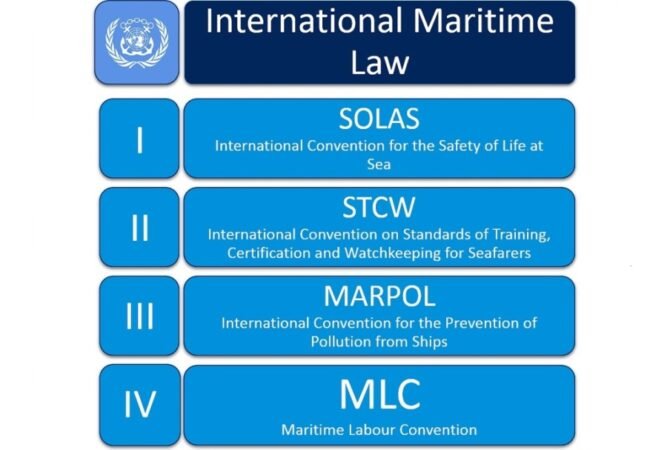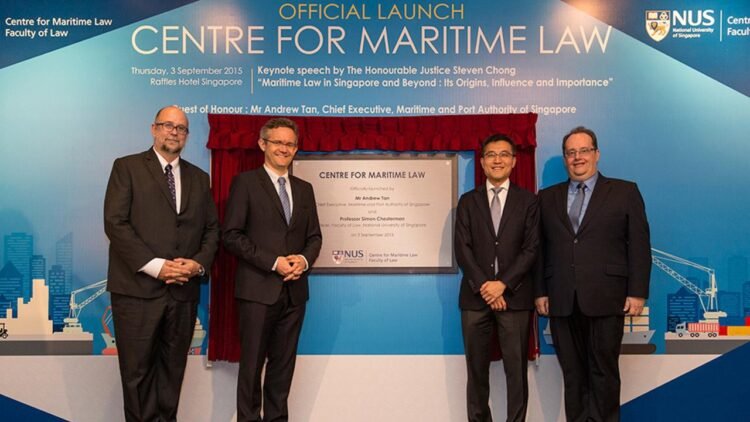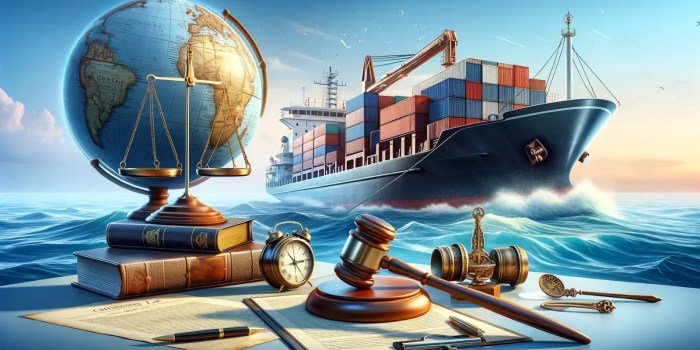
Navigating the complex world of maritime law requires access to reliable and insightful resources. Maritime law journals in the United States serve as crucial repositories of legal scholarship, case analyses, and legislative updates, shaping legal discourse and influencing judicial decisions. This guide delves into the landscape of these publications, exploring their historical development, prominent themes, access methods, and future trajectory within the evolving digital environment. We will examine leading journals, their editorial approaches, and the vital role they play in informing practitioners, researchers, and anyone seeking a deeper understanding of this specialized field.
From the historical evolution of these journals to their contemporary role in addressing emerging challenges like technological advancements and environmental concerns, we will provide a structured overview. This includes practical guidance on accessing these resources, critically evaluating their content, and understanding their impact on shaping maritime law in the United States and beyond.
Overview of Maritime Law Journals in the United States

Maritime law in the United States, a complex field encompassing admiralty, shipping, and international trade, relies heavily on scholarly publications to shape legal understanding and practice. These journals serve as crucial platforms for disseminating research, analyzing case law, and debating policy implications. Their contributions are vital to the ongoing evolution of maritime jurisprudence.
Top Ten Influential Maritime Law Journals in the United States
The following table lists ten influential maritime law journals, acknowledging that ranking is subjective and depends on criteria such as citation frequency, editorial board prestige, and perceived impact within the field. Many other esteemed journals also contribute significantly to the discourse.
| Journal Name | Publisher | Frequency | Focus/Specialization |
|---|---|---|---|
| Journal of Maritime Law and Commerce | University of Texas Press | Quarterly | Broad range of maritime law topics |
| Tulane Maritime Law Journal | Tulane University Law School | Annually | International and comparative maritime law |
| The Journal of International Maritime Law | Martinus Nijhoff Publishers | Quarterly | International shipping law and policy |
| Maritime Lawyer | Maritime Law Association of the United States | Quarterly | Practical aspects of maritime law and litigation |
| Journal of Ocean and Coastal Law | University of Oregon School of Law | Annually | Ocean and coastal resource management |
| Texas Maritime Law Review | Texas A&M University School of Law | Annually | Focus on U.S. Gulf Coast maritime issues |
| Connecticut Maritime Law Journal | University of Connecticut School of Law | Annually | Broad spectrum of maritime law topics |
| Florida Journal of International Law | University of Florida Levin College of Law | Annually | International law with significant maritime law coverage |
| American Maritime Cases | Litigation Publications | Monthly | Case reporting and analysis |
| Virginia Journal of International Law | University of Virginia School of Law | Annually | International law with maritime law components |
Historical Development of Maritime Law Journals in the US
The development of dedicated maritime law journals in the U.S. reflects the growth and complexity of the field itself. Early maritime legal scholarship often appeared in broader legal publications. The emergence of specialized journals in the 20th century coincided with the expansion of international trade and the increasing sophistication of maritime law. Key milestones include the founding of influential journals like the *Journal of Maritime Law and Commerce* and the rise of law school-affiliated publications that fostered academic rigor and specialized research. The growth of these journals is intrinsically linked to the increasing complexity of maritime law, spurred by globalization, technological advancements in shipping, and evolving international regulations.
Types of Articles Commonly Found in US Maritime Law Journals
US maritime law journals showcase a variety of article types, reflecting the multifaceted nature of the field. Case commentaries offer detailed analyses of significant court decisions, exploring their implications for future litigation and policy. Scholarly articles present original research on specific legal issues, often incorporating theoretical frameworks and comparative perspectives. Legislative updates track changes in maritime law, providing summaries and analyses of new statutes and regulations. Additionally, many journals feature book reviews, providing critical evaluations of recent publications relevant to the field. For example, a recent issue of the *Journal of Maritime Law and Commerce* might include a commentary on a Supreme Court ruling on Jones Act liability, a scholarly article comparing US and European approaches to marine pollution, and a legislative update on recent amendments to the Carriage of Goods by Sea Act.
Journal Content and Scope
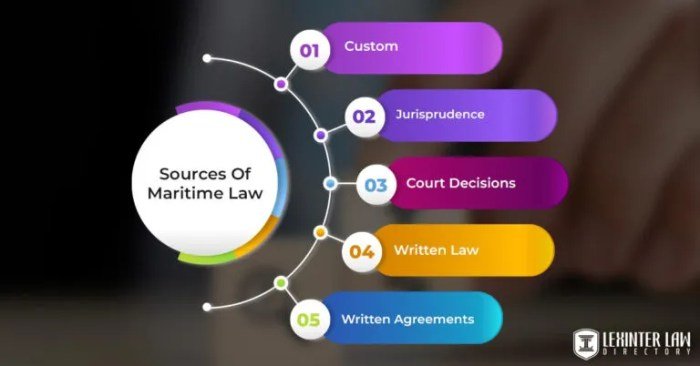
US maritime law journals provide a crucial platform for scholarly discourse, shaping legal understanding and influencing judicial decisions within the complex field of admiralty law. Their content reflects the evolving nature of maritime activities and the legal challenges they present. The journals’ scope encompasses a wide range of topics, from traditional areas like shipping contracts and collisions to emerging issues in areas such as offshore energy and environmental protection.
The breadth and depth of coverage within these journals are significant, offering in-depth analysis of case law, legislation, and international conventions. They serve as essential resources for legal professionals, academics, and anyone interested in understanding the intricacies of maritime law in the United States.
Prominent Themes in US Maritime Law Journals
The following themes have consistently appeared in prominent US maritime law journals over the last five years, reflecting key areas of legal and practical concern within the industry.
- Autonomous Vessels and Maritime Technology: The rapid advancement of autonomous vessel technology presents significant legal challenges concerning liability, safety regulations, and the application of existing maritime law to unmanned systems. Journals have explored issues surrounding the allocation of responsibility in accidents involving autonomous vessels, the need for updated regulatory frameworks, and the implications for maritime insurance. For example, articles have debated the adequacy of existing negligence standards in addressing failures in autonomous systems.
- Maritime Cybersecurity: The increasing reliance on digital systems in maritime operations has highlighted the vulnerability of ships and ports to cyberattacks. Journals have extensively covered the legal implications of such attacks, including liability for data breaches, the enforcement of cybersecurity regulations, and the development of effective risk management strategies. Discussions often include analysis of international conventions and national legislation aimed at enhancing maritime cybersecurity.
- Environmental Regulations and Maritime Pollution: The environmental impact of maritime activities has remained a central theme, with journals publishing articles on the enforcement of pollution regulations, the liability for oil spills and other environmental damage, and the development of sustainable maritime practices. Recent articles have focused on the evolving legal frameworks addressing ballast water management, greenhouse gas emissions from ships, and the protection of marine ecosystems.
Comparative Editorial Approaches of Leading Maritime Law Journals
While both the *Journal of Maritime Law and Commerce* and the *Tulane Maritime Law Journal* are leading publications in the field, their editorial approaches exhibit subtle differences. The *Journal of Maritime Law and Commerce* tends to favor a more practice-oriented approach, often publishing articles that directly address current legal issues facing maritime professionals. It frequently features case notes and commentary on recent court decisions, offering practical guidance for navigating complex legal situations. In contrast, the *Tulane Maritime Law Journal* often prioritizes scholarly articles that engage in in-depth theoretical analysis of maritime law principles. It tends to explore broader legal and policy issues, incorporating comparative perspectives and international legal frameworks. While both journals publish high-quality scholarship, their distinct editorial foci cater to slightly different audiences and research interests.
Role of US Maritime Law Journals in Shaping Legal Discourse and Influencing Judicial Decisions
US maritime law journals play a vital role in shaping legal discourse and indirectly influencing judicial decisions. They provide a platform for legal scholars and practitioners to share their expertise, contributing to the ongoing development and refinement of maritime law principles. Judges and lawyers often cite articles published in these journals in their briefs and opinions, demonstrating the journals’ influence on legal arguments and judicial reasoning. The in-depth analysis and critical perspectives presented in these publications contribute to a more nuanced understanding of complex legal issues, thereby influencing both legal scholarship and judicial practice. The journals’ impact is further enhanced through their accessibility to a broad audience of legal professionals, academics, and policymakers, ensuring a wide dissemination of informed perspectives on maritime legal issues.
Accessing and Utilizing Maritime Law Journals
Accessing and utilizing maritime law journals effectively requires a strategic approach, combining knowledge of available resources with critical evaluation skills. Researchers need to understand the various pathways to access these journals, weigh the benefits and limitations of different search methods, and critically assess the information they find. This section provides a practical guide for navigating this process.
Effective searching and accessing US maritime law journals involves leveraging both online databases and subscription services. Many academic libraries subscribe to comprehensive legal databases, offering full-text access to numerous maritime law journals. These databases typically allow for sophisticated searches, Boolean operators (AND, OR, NOT), and field-specific searches (e.g., searching only within the title or abstract). Researchers should familiarize themselves with the specific search functionalities of the databases they utilize. Beyond dedicated legal databases, general academic search engines like Google Scholar can also yield relevant results, although the quality and accessibility of full-text articles may vary. Subscription services, while often costly, offer a convenient and comprehensive access point to a wide array of journals. Choosing the right service depends on the researcher’s needs and budget.
Online Databases and Subscription Services
Many large legal databases, such as Westlaw, LexisNexis, and Bloomberg Law, offer extensive collections of US maritime law journals. These databases provide advanced search capabilities, allowing researchers to refine their searches by date, jurisdiction, s, and other criteria. Access to these services typically requires a subscription, often through academic institutions or law firms. Other specialized databases, focusing on maritime law or related fields like shipping and transportation, may also provide access to relevant journals. Researchers should investigate the specific databases available through their institution or consider individual subscriptions if necessary. The user interfaces and search functions vary across these databases, requiring some familiarization before efficient use.
Free or Low-Cost Resources for Accessing US Maritime Law Journals
Finding free or low-cost access to US maritime law journals can be challenging, but several avenues exist. It’s important to remember that access to full-text articles is not always guaranteed through these resources.
- Google Scholar: While not exclusively dedicated to legal materials, Google Scholar indexes a vast amount of scholarly literature, including some maritime law journals. Access to full text depends on the journal’s open-access policy or the researcher’s institutional affiliations.
- University Library Websites: Many university libraries offer online catalogs and databases accessible to the public, at least partially. Checking the websites of universities with strong maritime law programs may reveal publicly accessible journal articles.
- Open Access Journals: Some maritime law journals operate on an open-access model, making their content freely available online. Searching for “open access maritime law journals” will yield a list of potential resources.
- SSRN (Social Science Research Network): SSRN hosts working papers and published articles across various disciplines, including law. It may contain relevant maritime law articles, though not necessarily a comprehensive collection of journals.
- HeinOnline (limited free access): HeinOnline offers access to a large collection of legal materials, including some maritime law journals. While primarily a subscription service, it might offer limited free access to certain content or previews.
Critical Evaluation of Information in Maritime Law Journals
Critically evaluating the credibility and reliability of information found in maritime law journals is crucial. Researchers should consider several factors:
The journal’s reputation and impact factor, the author’s credentials and expertise, the publication date (ensuring the information is current and relevant), the methodology used in any empirical studies, the presence of peer review, and any potential biases or conflicts of interest. Cross-referencing information across multiple sources and examining the journal’s editorial policies can further enhance the reliability assessment. By employing these critical evaluation techniques, researchers can ensure the accuracy and validity of the information they use in their research.
Specific Areas of Maritime Law Covered
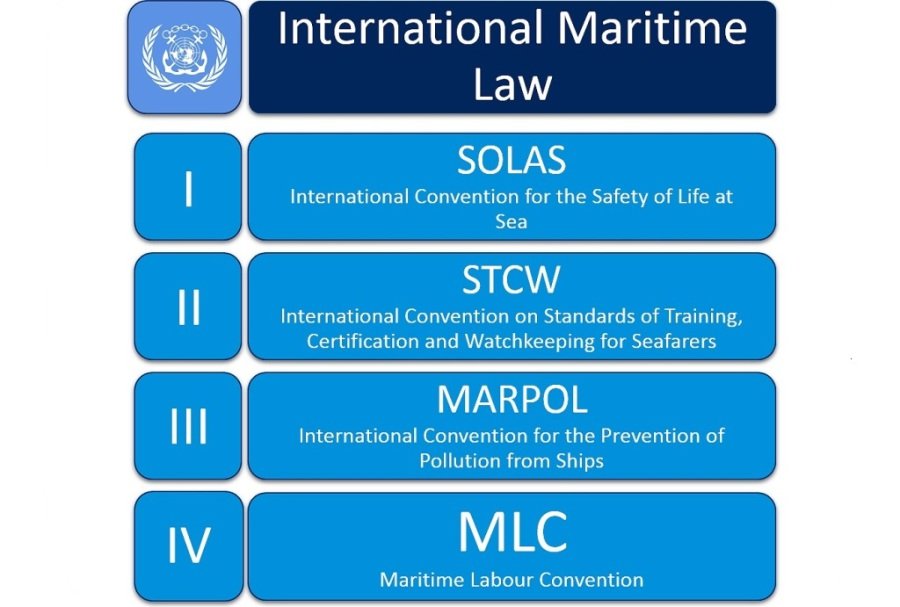
US maritime law journals delve into a wide range of specialized legal areas, providing analysis of recent case law and offering insights into evolving legal principles. These journals serve as crucial resources for legal professionals, academics, and anyone involved in maritime commerce. Their coverage extends beyond domestic law to encompass international conventions and their impact on US-based entities.
The breadth of topics covered reflects the complexity of the maritime industry, encompassing everything from ship collisions and cargo damage to environmental regulations and the legal intricacies of maritime contracts. Detailed analysis of court decisions helps shape understanding of precedents and influences future litigation strategies.
Recent Case Law and its Impact
US maritime law journals regularly feature discussions of significant legal cases, providing in-depth analysis of their rulings and implications. These analyses help shape the understanding and application of maritime law. The following table showcases examples:
| Case Name | Journal | Year Published | Key Legal Issue |
|---|---|---|---|
| Norfolk Southern Railway Co. v. Kirby | Journal of Maritime Law and Commerce | 2022 | Admiralty Jurisdiction, particularly the reach of the saving to suitors clause. |
| The Star Kestrel | Tulane Maritime Law Journal | 2023 | Maritime Contracts; specifically, the enforceability of charter party clauses. |
| In re: The Marine Insurance Case (hypothetical example for illustration) | Maritime Lawyer | 2024 | Marine Insurance; focusing on the interpretation of an “all risks” clause and its application to a specific loss event. |
Note: The hypothetical case is included to illustrate the typical coverage. Actual case names and details would be sourced from relevant journals.
International Maritime Law and its Implications for US Businesses
US maritime law journals play a vital role in bridging the gap between international maritime law and its practical application within the United States. They analyze international conventions like the UNCLOS (United Nations Convention on the Law of the Sea) and the various IMO (International Maritime Organization) regulations, explaining their impact on US businesses involved in international shipping, trade, and maritime operations. Articles often explore the complexities of jurisdiction, liability, and enforcement in international maritime disputes, providing guidance for US-based companies navigating the global maritime landscape. The journals highlight the need for US businesses to comply with international standards and to understand the potential legal ramifications of non-compliance.
Emerging Challenges in Maritime Law
The journals address emerging challenges in maritime law, including those related to technological advancements, environmental protection, and cybersecurity. For example, discussions of autonomous vessels and their legal implications are becoming increasingly common, addressing questions of liability in the event of accidents involving unmanned ships. The increasing focus on environmental sustainability is reflected in articles examining the legal frameworks governing pollution prevention, ballast water management, and the impacts of climate change on maritime operations. Similarly, the growing threat of cyberattacks on maritime infrastructure and operations leads to detailed analyses of cybersecurity vulnerabilities and the development of appropriate legal and regulatory responses. These journals serve as platforms for exploring solutions and shaping the legal landscape to address these evolving concerns.
The Future of Maritime Law Journals
The digital revolution has profoundly impacted the scholarly landscape, and US maritime law journals are not immune to its transformative effects. The traditional model of print publication and dissemination is evolving rapidly, presenting both challenges and opportunities for these specialized publications. Understanding these changes is crucial for ensuring the continued relevance and accessibility of maritime law scholarship.
The increasing reliance on digital platforms is reshaping how maritime law journals are published, accessed, and utilized. This shift presents a range of possibilities for enhancing the dissemination of legal knowledge and promoting a broader understanding of this complex field.
Digitalization’s Impact on Publication and Dissemination
Digitalization offers significant advantages in terms of publication and dissemination. Online journals offer immediate global accessibility, eliminating geographical limitations and significantly reducing publication costs. Furthermore, digital formats allow for enhanced searchability through indexing and full-text searching, improving the discoverability of relevant articles. For instance, the transition to online-only publication by some journals has resulted in a noticeable increase in readership and citation counts, demonstrating the power of digital accessibility. Moreover, interactive features such as hyperlinking to relevant case law and statutes can greatly enrich the reader’s experience and understanding. However, challenges remain, such as ensuring equitable access in areas with limited internet infrastructure and addressing issues of digital preservation and long-term archiving.
Predictions for the Future of US Maritime Law Journals
Several trends suggest a continued evolution of US maritime law journals. Open access publishing, where articles are freely available online, is gaining momentum, driven by a growing emphasis on making scholarly research publicly accessible. This trend is likely to increase the visibility and impact of maritime law scholarship, potentially leading to a more diverse range of contributions from scholars and practitioners globally. Conversely, the subscription-based model may become increasingly challenged, potentially leading to innovative funding models for journals. The increasing use of online legal resources, such as Westlaw and LexisNexis, will likely continue to shape the consumption of legal scholarship. Journals will need to adapt by integrating seamlessly with these platforms and offering content in formats easily incorporated into legal research workflows. For example, we might see a rise in journals utilizing advanced data analytics and visualization techniques to present complex maritime law data in more accessible and engaging ways.
Promoting Greater Accessibility and Understanding of Maritime Law
US maritime law journals have a critical role to play in promoting greater accessibility and understanding of maritime law for a wider audience. By embracing digital technologies and open access models, journals can reach a far broader readership, including maritime professionals, policymakers, students, and the general public interested in this specialized field. This increased accessibility can contribute to better informed decision-making in maritime policy and practice, as well as fostering greater public awareness of the importance of maritime law in global trade and environmental protection. For instance, the publication of plain-language summaries of complex legal decisions or the creation of interactive online resources explaining key maritime legal concepts can significantly improve public understanding. The potential for multimedia content, such as videos and podcasts, further enhances the accessibility and engagement of maritime law scholarship.
Final Thoughts
The United States’ maritime law journals are indispensable tools for navigating the complexities of this dynamic legal field. Their role in shaping legal discourse, influencing judicial decisions, and providing access to crucial information cannot be overstated. As the digital landscape continues to evolve, these journals will undoubtedly adapt, offering new avenues for disseminating knowledge and fostering a deeper understanding of maritime law for a broader audience. By understanding their history, content, and future potential, we can harness their power to promote clarity, efficiency, and justice within this vital sector.
Clarifying Questions
What are the subscription costs for most US maritime law journals?
Subscription costs vary widely depending on the journal and the type of access (individual vs. institutional). Some offer individual subscriptions at a reasonable price, while others are primarily accessible through institutional subscriptions (universities, law firms).
Are there any open-access maritime law journals in the US?
While many journals are subscription-based, the number of open-access journals is growing. Searching online databases using s like “open access” and “maritime law” will reveal available options.
How often are US maritime law journals typically published?
Publication frequency varies. Some journals publish quarterly, others bi-annually, and some even monthly, depending on the volume of submissions and editorial schedules.
Where can I find case citations referenced in these journals?
Most journals provide full citations within the text of articles, allowing for easy verification and further research using online legal databases such as Westlaw or LexisNexis.
